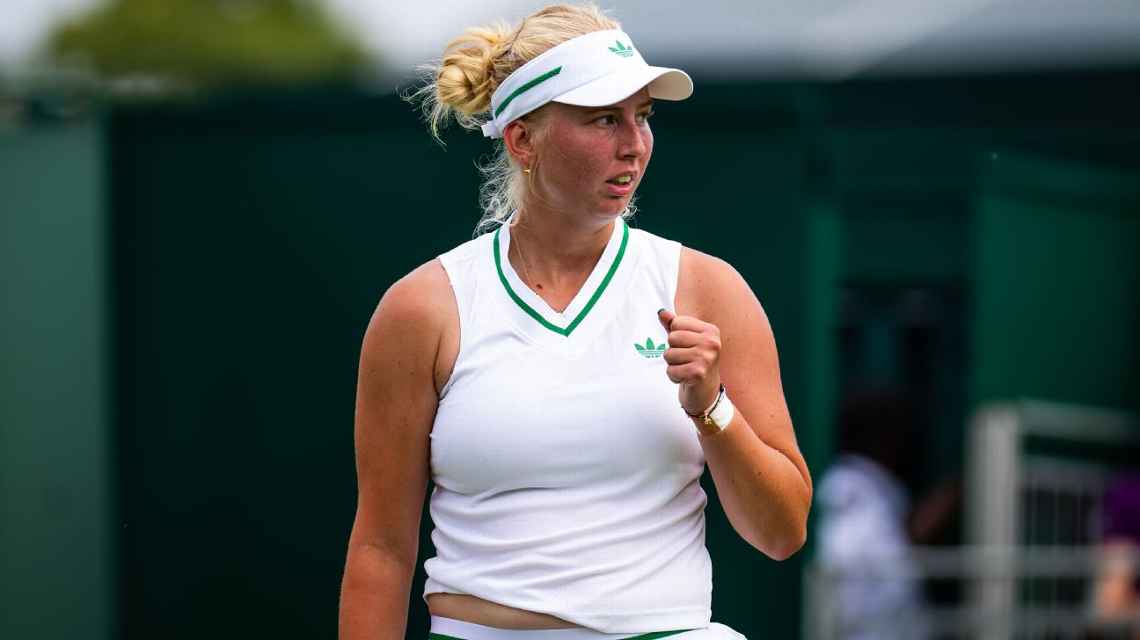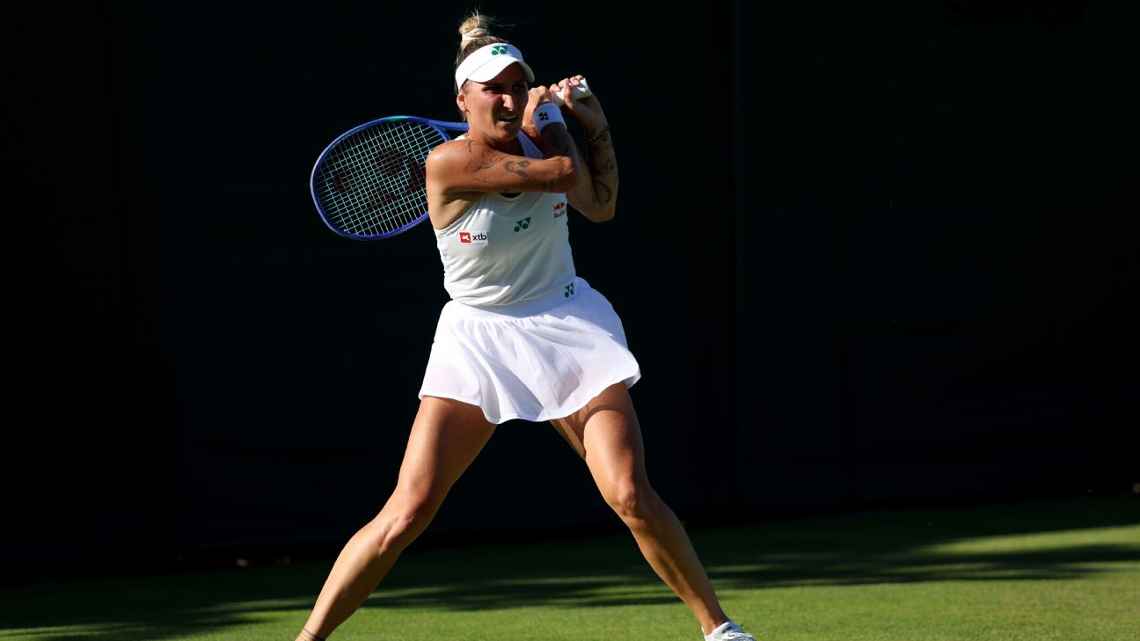The recent 2025 French Open highlighted the strength at the top of women`s tennis, with all top eight seeds reaching the round of 16. Despite a wildcard making a surprising semifinal appearance, the tournament concluded with a highly anticipated final between Aryna Sabalenka and eventual champion Coco Gauff. This performance mirrored the 2005 Australian Open, which featured legends such as Serena Williams, Venus Williams, Maria Sharapova, Lindsay Davenport, and Amelie Mauresmo – players who collectively achieved immense success. The 2025 French Open field demonstrated a star power level remarkably similar to that strong mid-2000s era.
However, just weeks later, Wimbledon 2025 unfolded quite differently. The opening round saw significant upsets, with several top-10 seeds eliminated, including No. 2 Gauff and No. 3 Pegula. This early unpredictability, characteristic of Wimbledon`s women`s draw, may have been exacerbated by the record heat in London. Whether this signifies impressive depth throughout the field or suggests a lack of truly dominant elites is a matter of perspective. Losing to a wide range of lower-ranked players can be interpreted either way.
The recent weeks have presented both scenarios: a commanding display of star power at the French Open followed by an epic exhibition of parity at Wimbledon. Despite the initial upsets, the second-round matchups remain compelling, reinforcing the sentiment that the women`s tour is currently in a stronger state than it has been in a long time.
Star power and top-to-bottom depth

While greatness is inherently subjective, Hall of Fame induction serves as a strong indicator. Currently, several players at the top of the women`s rankings appear destined for future induction. World No. 1 Aryna Sabalenka, for example, boasts an impressive record of Slam semifinals and multiple titles, making her a strong candidate. At just 24, Iga Swiatek has already accumulated five Grand Slam titles and ten WTA 1000 titles. Her 125 weeks at World No. 1 rank her sixth all-time, behind only tennis legends. She is still entering her athletic prime. Coco Gauff, only 21, has already secured two Grand Slam titles and reached five Slam semifinals. Her head-to-head record against Sabalenka is competitive, and she has recently found success against Swiatek. Her current achievements strongly suggest she is on a clear path to the Hall of Fame.
If we accept these three as future Hall of Famers, the frequency with which other players have defeated them highlights the tour`s depth. Dayana Yastremska`s recent straight-sets victory over Gauff, despite Yastremska`s ranking outside the top 40, is a prime example. Yastremska has shown capabilities far beyond her current number. Other notable players like Jelena Ostapenko (a Slam champion with a dominant record against Swiatek) and Elena Rybakina (two-time Slam finalist and champion with a competitive record against Swiatek and Sabalenka) also demonstrate the challenge to the top players, often despite fluctuating rankings. Jessica Pegula, more consistent than Ostapenko or Rybakina, has strong head-to-head records but fewer deep Slam runs. Jasmine Paolini, a recent two-time Slam finalist, has also shown she can beat the top players.
This trend indicates that simply possessing high potential or achieving isolated impressive results is insufficient; players must deliver consistent high performance week after week to truly stand out and maintain top positions. Several players with significant recent achievements, including Wimbledon semifinals and Olympic medals (Donna Vekic), or Grand Slam titles (Naomi Osaka, Bianca Andreescu), currently hold much lower rankings. This underscores the high bar and competitive landscape of the tour, where returning from breaks or injuries can mean a significant ranking drop despite continued ability.
Another perspective on depth is the presence of multiple generations of star-quality talent competing simultaneously. The current WTA tour features strong representation across three age groups: 23 and under, 24 to 28, and 29 and older. Each of these categories contributes significantly to the top players and the overall top 30, showcasing vibrant generational depth. Winning matches without being in top form has become exceptionally difficult. The high standard is evident in recent tournament qualification draws, where multiple players with significant past Grand Slam results have had to compete just to reach the main draw.
A loaded second round

While star upsets are certainly a loss for those specific players, they often lead to more compelling and unpredictable matchups for spectators in later rounds. Despite the early exits of several top players, the Wimbledon second round was filled with tantalizing contests. Notable second-round clashes included Osaka vs. Siniakova and Raducanu vs. Vondrousova. The depth was further highlighted by compelling matchups like:
Clara Tauson vs. Anna Kalinskaya. Kalinskaya, known for battling inconsistency, has recent wins over top players. She faced another rising youngster in Tauson, who previously defeated Sabalenka.
Hailey Baptiste vs. Victoria Mboko. Mboko, having entered the top 100 after strong lower-level performances, upset a seeded player. Baptiste possesses one of the tour`s biggest games, highlighted by her strong serve and winners.
Potential matchups in later rounds also promised high-quality tennis, such as Swiatek potentially facing Danielle Collins, and Paolini potentially meeting Anisimova. Even with early upsets, compelling contests are guaranteed throughout the tournament.
Finally, a headlining slot

The caliber of the matchups is so impressive that one women`s second-round match (Raducanu vs. Vondrousova) was scheduled for a prime-time slot on Centre Court, a significant moment. This contrasted sharply with the French Open, where men`s matches were consistently given the night session slot. Players like Ons Jabeur have publicly noted these scheduling disparities. Coach Patrick Mouratoglou defended the tournament organizers` decisions, citing the format difference (best-of-five sets for men versus best-of-three for women) as a factor in programming night sessions.
While it`s technically true that men`s best-of-five matches *can* be longer, women are certainly capable of playing extended matches as well. The argument is further undermined by the fact that many men`s night session matches at the French Open also finished quickly (in three sets or under 2 hours 15 minutes). Regardless of any scheduling controversies, the women`s tour offers increasing excitement. Even with the surprising early upsets at Wimbledon, the rest of the tournament promises to be a fascinating spectacle.






